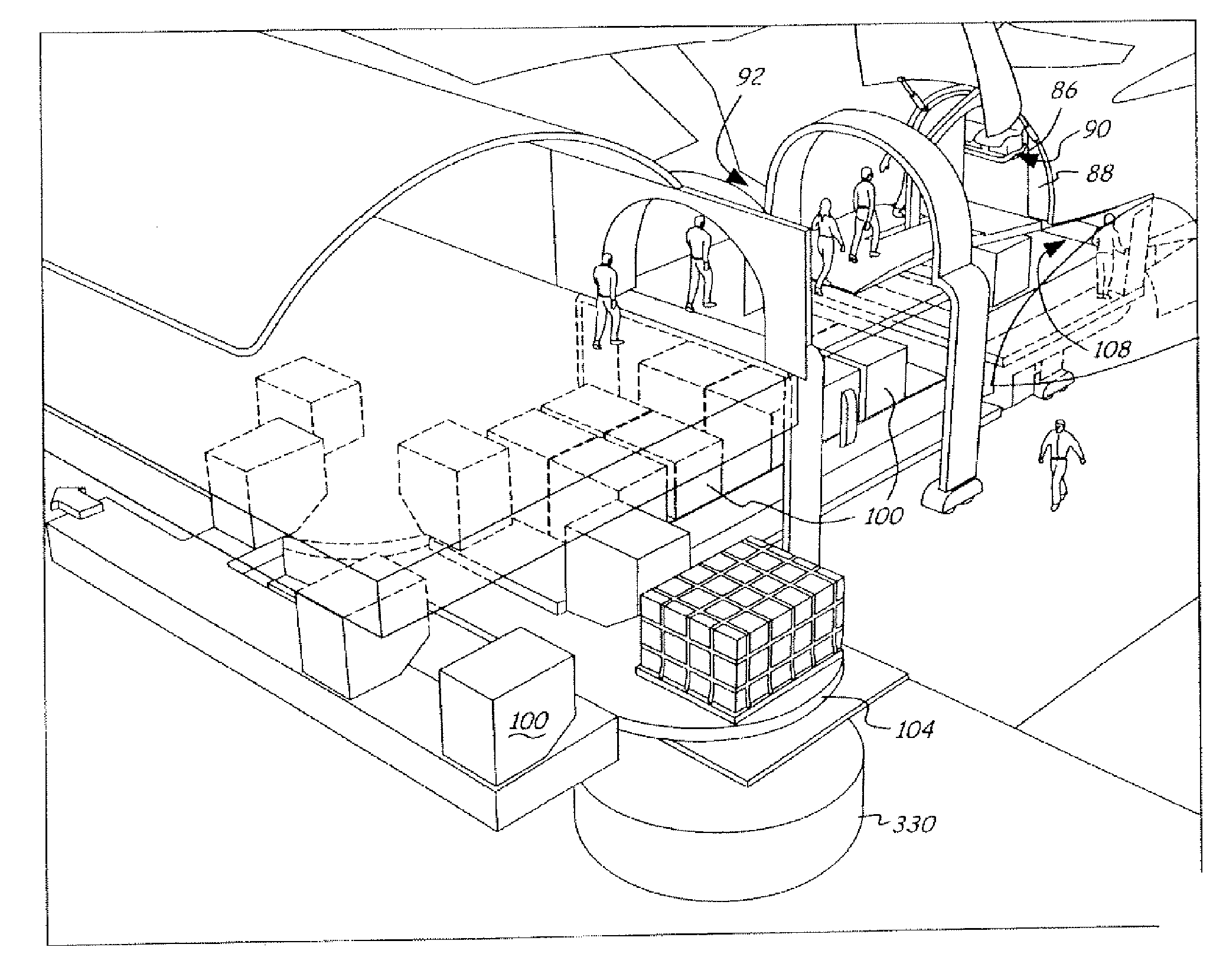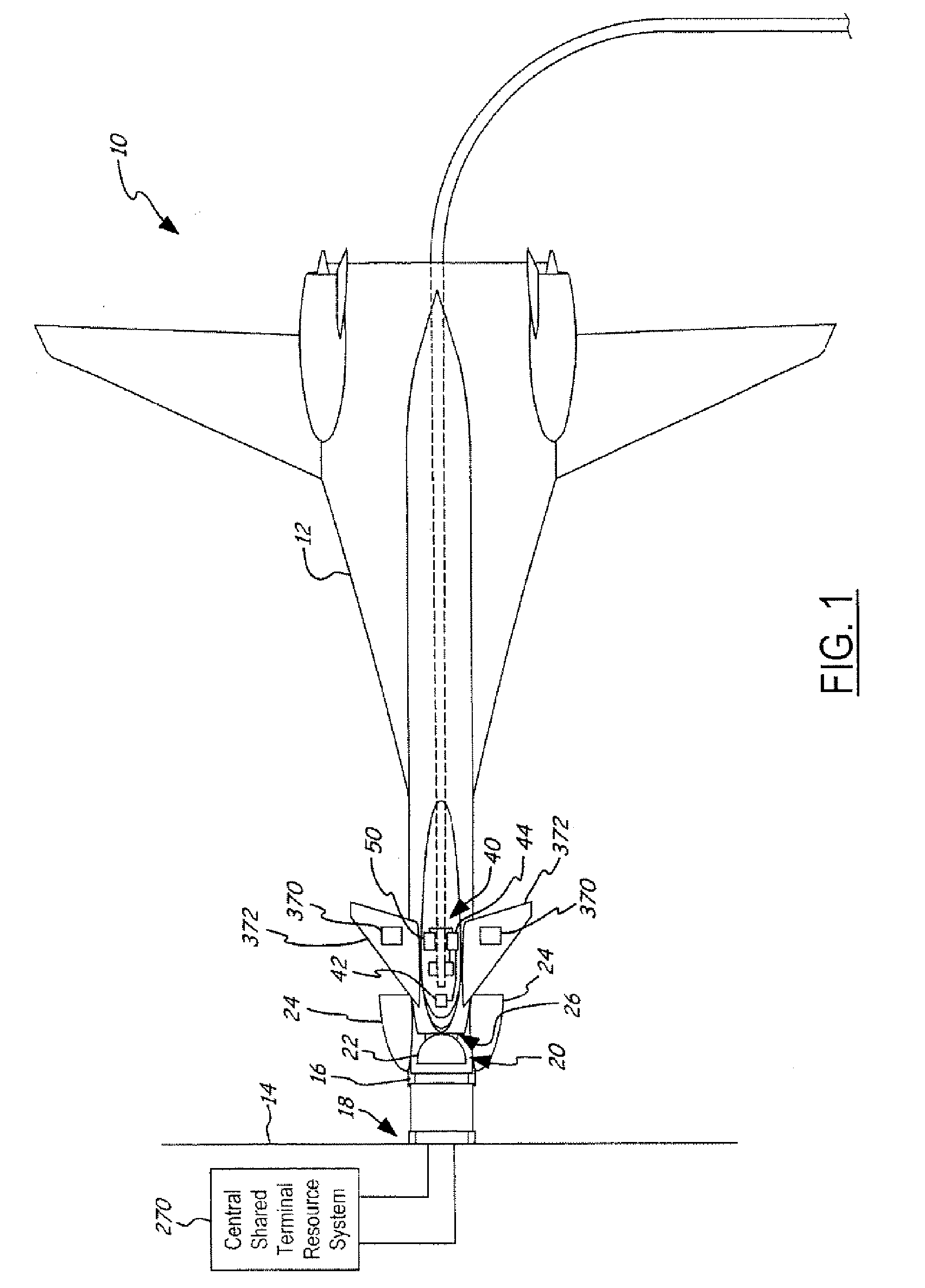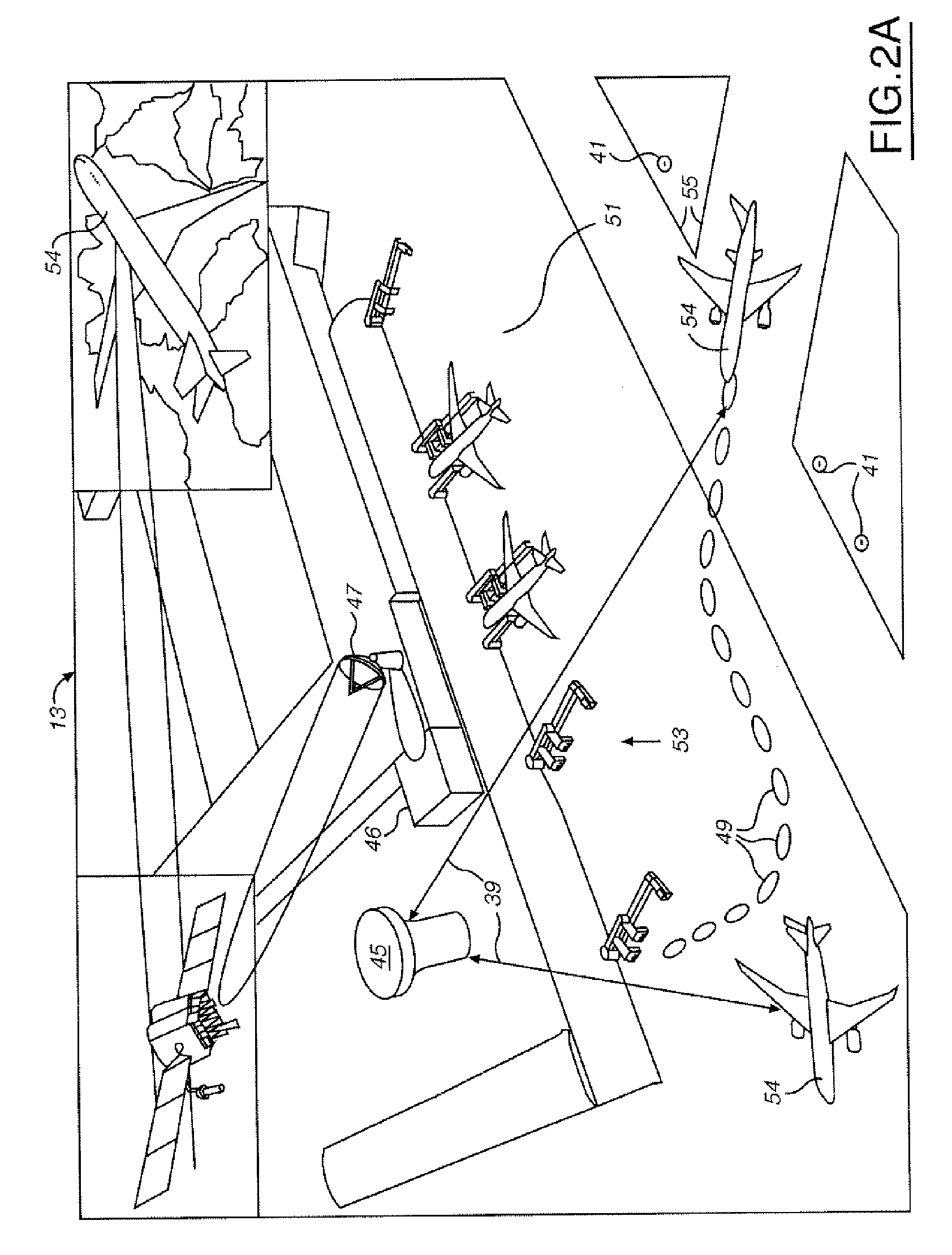Isolated crew deck for an operational ground suppport system
a technology of a crew deck and an operational ground, which is applied in the direction of aircraft crew accommodation, launching weapons, electric supply, etc., can solve the problems of time-consuming use of galley services, fueling, fueling, etc., and achieves the effects of improving aircraft security, interior space, and increasing service efficiency
- Summary
- Abstract
- Description
- Claims
- Application Information
AI Technical Summary
Benefits of technology
Problems solved by technology
Method used
Image
Examples
Embodiment Construction
[0055] In each of the following Figures, the same reference numerals are used to refer to the same components. While the present invention is described with respect to systems and methods of servicing an aircraft, the present invention may be adapted for various applications and systems including: aeronautical systems, land-based vehicle systems, or other applications or systems known in the art that require servicing of a vehicle.
[0056] In the following description, various operating parameters and components are described for one constructed embodiment. These specific parameters and components are included as examples and are not meant to be limiting.
[0057] Also, in the following description the terms “service”, “services”, and “servicing” may include and / or refer to any aircraft services, such as passenger ingress / egress services, cargo ingress / egress services, aircraft primary services, aircraft secondary services, galley services, cabin cleaning services, lavatory services, o...
PUM
 Login to View More
Login to View More Abstract
Description
Claims
Application Information
 Login to View More
Login to View More - R&D
- Intellectual Property
- Life Sciences
- Materials
- Tech Scout
- Unparalleled Data Quality
- Higher Quality Content
- 60% Fewer Hallucinations
Browse by: Latest US Patents, China's latest patents, Technical Efficacy Thesaurus, Application Domain, Technology Topic, Popular Technical Reports.
© 2025 PatSnap. All rights reserved.Legal|Privacy policy|Modern Slavery Act Transparency Statement|Sitemap|About US| Contact US: help@patsnap.com



